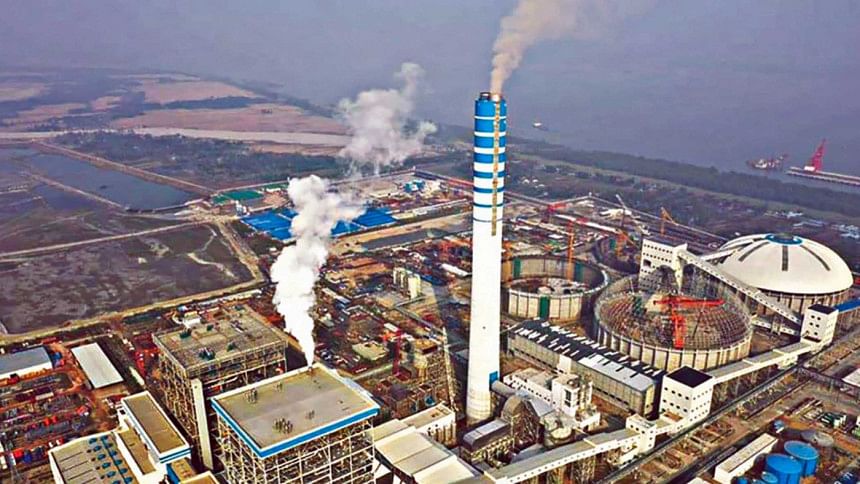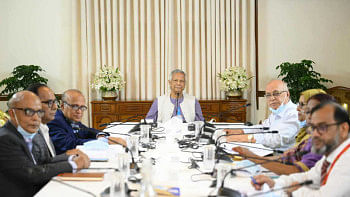Where logic ends, our electricity policy begins

Over a decade ago, power supply in Bangladesh was inadequate and production was virtually nonexistent. Increasing power production was a dire necessity then. The last caretaker government initiated efforts to that end; those efforts gained momentum when the Awami League government took office in 2009.
As soon as they came to power, the Awami League government started propelling the development of oil- and gas-based rental and quick rental power plants as a part of their overall effort to increase power production in the country. Several ruling party leaders, lawmakers, and businessmen were given approval to set up quick rental and rental power plants—even those with no prior knowledge or experience in the area. The process raised many questions then, as it had several loopholes: there was no mechanism to check the expertise of the producer; the prices were too high; and the producers were able to bill the government for "capacity charge" despite zero production of power.
Because of these loopholes and the lack of transparency in the entire power production process, the government faced a lot of criticism. Yet, it stayed firm on its decision. In order to avoid possible legal actions in the future—as well as to smoothen the process of opening up these power plants—the government formulated a law named the Quick Enhancement of Electricity and Energy Supply (Special Provisions) Act, passed in parliament in 2010.
Despite all these issues, the power sector in Bangladesh began to see higher output, and people started getting electricity supply per demand. There were still concerns regarding the alleged corruption in the sector and the price hike, yet the general populace started to experience a sense of relief. Residences, commercial establishments and factories started to get uninterrupted power supply. It seemed the curse of "load shedding" was finally being lifted from the country.
But those issues still exist, and have become causes for concern. According to experts, there are some major shortcomings in the overall "development philosophy" of the power sector in Bangladesh. Before, there was a severe lack of supply, but now we have ample amount of power. There is no clear answer to some vital questions, such as how much power the country needs, to what extent does the production capacity need to be enhanced, etc.
In 2008-09, our electricity output was around 3,800MW against a demand of around 7,000MW, which means there was a shortage of more than 3,000MW. At present, the total demand for electricity ranges between 9,000MW and 12,000MW. But the country's power generation capacity is more or less 22,000MW. As yet, the daily power production has topped at 13,000MW. The average daily production now is 9,000MW. The daily demand for power rarely exceeds that amount, which means we are operating at less than half of our power generation capacity.
Despite this situation, because of the conditions set in the agreements, the government is forced to pay the producers the capacity charge for about 12,000MW of power that is not even produced. That capacity charge amounts to a whopping Tk 9,000 crore.
In 2020, the Centre for Policy Dialogue (CPD), a Dhaka-based think tank, said about 60 percent of the power plants in Bangladesh were sitting idle and earning money in the form of capacity charges. According to last year's data provided by US-based research firm the International Energy and Environment Foundation (IEEF), about 57 percent of the power plants in Bangladesh are sitting idle.
According to a source, a recent utility report from the power sector—which has not been made public—shows that in 2023-24, the country's power overcapacity will be as much as 66 percent, which means the burden of capacity charge will grow even bigger.
After building some small rental and quick rental power plants, the Bangladesh government proceeded to make big investments in big, coal-based power plants. But how these plants will be connected to the national grid, where the electricity generated from these plants will be used, and whether there is a demand for that power still remain unclear. A key benefit of having large-scale power plants is that the production costs go down, but the opposite is happening in Bangladesh.
The two-unit Payra thermal power plant, with 1,320MW power generation capacity, officially went into production last year. But the 400kV transmission line required to supply the generated power to the national grid has not been set up yet. There is no other way to connect the output of the power plant to the national grid, which means it is not operating at its full capacity.
We are being forced to pay Tk 100 crore as capacity charge for the Payra power plant as well.
The organisation that was appointed to build the transmission line failed to meet the deadline. The contractor was fired and replaced with a company named China National Machinery Import & Export Corporation. Speaking to the daily Prothom Alo earlier this month, State Minister for Power, Energy and Mineral Resources Nasrul Hamid said: "We hope the work for the transmission line will be complete by next year. The work was interrupted due to a spike in coronavirus infections."
He further said: "As long as we are not being able to utilise the produced electricity [from Payra power plant], we will be forced to continue paying the capacity charge."
Even if the transmission line is established within the deadline specified by the state minister, we will be forced to pay a monthly capacity charge of Tk 100 crore for nearly a year and a half. It is also not certain whether we will be able to use the electricity generated at Payra plant even if the transmission line is ready.
Energy expert Prof M Shamsul Alam also voiced his concerns regarding the transmission line and the issue of commercial production at Payra power plant.
"The approval for commercial production can be given only when full-capacity production is confirmed by running tests. Since there is no functional transmission line, there has been no scope for testing the full capacity of the two units [of Payra power plant]. But the power plant has been approved to go ahead with commercial production," he said.
"As the government has to bear the cost of idle capacity charge for the power plant, the cost of per unit power generated there has gone up to Tk 10. This is the opposite of what the aim of such a large-scale power plant was—cheap electricity. In this case, the country's greater interest has been ignored to favour the power plant's benefits," he added.
Saying that the electricity generated at Payra coal-fired power plant would not be usable even when the transmission line is in place, Prof Shamsul Alam added: "The issue of the transmission line is being used as an excuse. Even if the transmission line is installed and fully functional, the 1,320MW of power generated at Payra plant cannot be used in full. Moreover, the second phase of Payra power plant has been initiated, which will see the construction of another plant with an additional 1,320MW generation capacity, set to be completed by 2024. There is a complete lack of transparency regarding the usage of that power. A big sum of money is being spent, in a non-transparent manner, in order to construct unnecessary power production facilities. Because of these coal-fired plants, not only is the biodiversity of the area +facing a threat, but money is being wasted as well."
Prof M Tamim, former adviser to the caretaker government and an energy expert, said: "Although it is claimed that Bangladesh's overall power generation capacity is 22,000MW, in reality it is about 15,000-16,000MW. But paying for capacity charges for idle power plants is causing a huge loss."
He also said transmission lines should be installed keeping in line with the construction of the power plants.
The Payra coal-fired power plant is importing coal at a price of USD 100 per tonne to fuel the production. The Barapukuria coal-fired power plant is buying coal extracted from the local mines at a price of USD 150 per tonne. A Chinese company is mining the coal from Barapukuria and selling it to the Bangladesh Coal Mining Company Ltd (BCMCL). The BCMCL is paying an extra USD 50 per tonne in order to buy locally mined coal, compared to the price paid for imported coal. As there is a scarcity of locally mined coal, the Barapukuria power plant is running at 50 percent capacity. Still, the cost of producing each unit of electricity is Tk 6.5 at Barapukuria, whereas the same costs Tk 10 at Payra. This leads to the question: Is the "impunity law" being exploited to build exorbitantly expensive power plants?
There are a few other big power plants under construction in Bangladesh. In Rampal, Bangladesh and India are jointly building a 1,320MW power plant. Japan is financing the construction of a 1,200MW power plant at Matarbari in Moheshkhali, Cox's Bazar. In Pabna's Rooppur, a 2,400MW nuclear power plant is being constructed. There are plans to supply electricity to the national grid from this two-unit power plant in 2023.
The government contracts with the rental and quick rental power plants will be expired by the end of this year. The Bangladesh Power Development Board (PDB) has sent a proposal to Bangladesh Energy Regulatory Commission (BERC) to renew contracts with five gas-fired rental and quick rental power plants.
Bangladesh is also importing electricity from India. As per the contract, we have an arrangement to procure 1,200MW of power from India on a daily basis. From India, Bangladesh is buying coal-fuelled and gas-fuelled electricity at a price of Tk 6 and 7 per unit, respectively.
Bangladesh will also buy hydroelectricity from Nepal, where India will act as the third party. It is not confirmed as to what amount of electricity will be procured, but the price per unit will be nearly Tk 8.
Before, there was no electricity; now, there is. This has become the guiding philosophy behind power generation in Bangladesh. But there is a disconnect between this philosophy and a science-based working plan. We have big power plants, and coal-fired plants that are extremely harmful to the environment are already in production—yet, the prices of electricity are not going down, nor is there any such possibility on the horizon. Crores of taka from the state coffers is getting squandered away in the name of capacity charge. Some producers are making money without generating any power, while the consumers are being forced to pay high tariffs.
At the end of the day, it is the people of the country who are being deprived.
Golam Mortoza is a journalist at The Daily Star. The article was translated from Bangla by Mohammed Ishtiaque Khan.

 For all latest news, follow The Daily Star's Google News channel.
For all latest news, follow The Daily Star's Google News channel. 



Comments